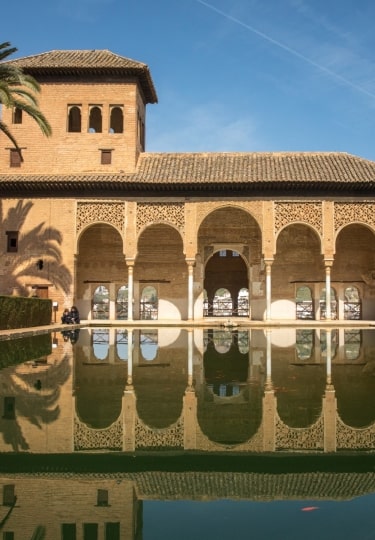If it’s your first time in Spain, prepare to be utterly spoiled by the country’s impressive architecture, sublime gastronomy, and soft sand beaches.
The best places to visit in Spain for first-timers range from the Guggenheim Museum Bilbao, to get a flavor of the country’s ground-breaking design, to savoring fine wines in nearby Rioja. There are hidden churches in quaint old towns and sprawling fortresses such as Granada’s Alhambra Palace waiting to be discovered.
Whether you choose to kick back in culture-rich Barcelona, replete with museums, galleries, and cathedrals, or delve into the rich gastronomy of Valencia, the birthplace of paella, Spain is a thoroughly enriching destination for both first-time and repeat visitors.
Guggenheim Museum Bilbao
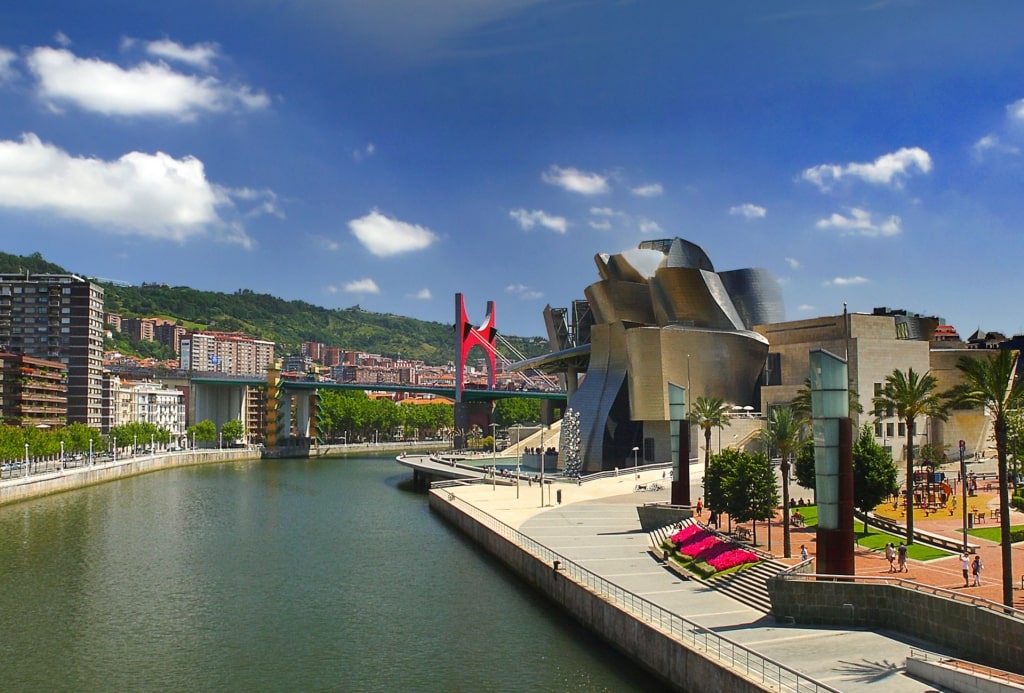
Guggenheim Museum Bilbao
When Spain’s Guggenheim Museum opened in 1997, it firmly put the industrial city of Bilbao on the map.
Visiting this gleaming, Frank Gehry-designed landmark on the Nervión River is one of the best things to do in Bilbao thanks to its jaw-dropping design. Gehry, showing off his architectural prowess, created a sculptural tangle of titanium featuring a soaring glass-fronted entrance.
The three-story Spanish museum is connected by a series of curving walkways that lead to the Atrium. There is a permanent collection alongside regular temporary exhibitions, featuring works from the mid-20th century through to the present day.

Puppy sculpture, Bilbao
Mark Rothko’s and Antonio Saura’s abstract paintings, and the neo-expressionist works of Jean-Michel Basquiat, are among the works inside, which also include sculptures and installations. Catch the Jeff Koons flower-covered “Puppy” sculpture outside. At almost 41 feet tall, it’s difficult to miss.
The Guggenheim Bilbao’s gift store is full of curated unexpected finds and there are two restaurants at the museum, too. Nerua Guggenheim Bilbao is a fine-dining restaurant helmed by chef Josean Alija, while the more casual Bistró Guggenheim Bilbao faces the river.
Cadiz
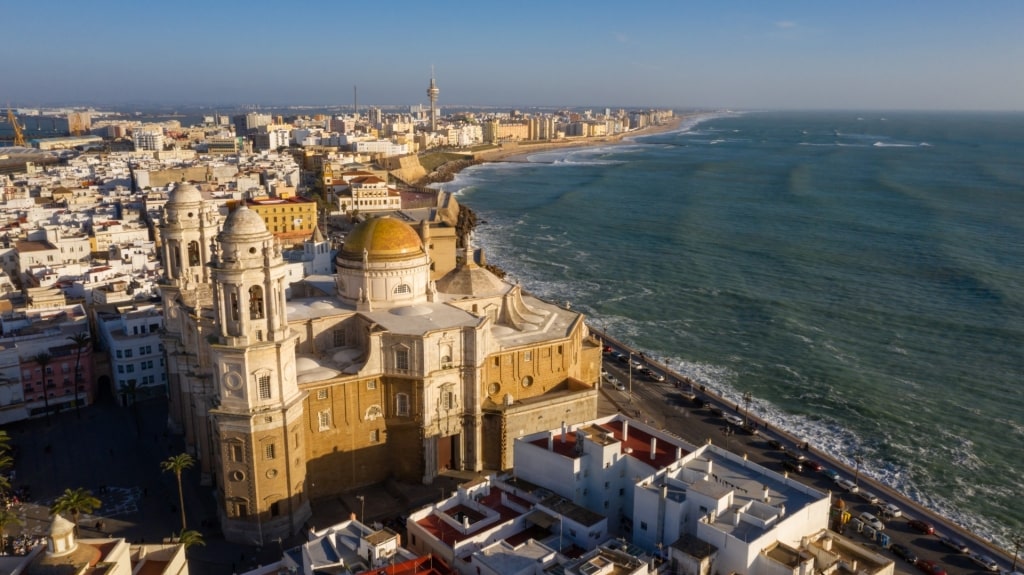
Cadiz
If this is your first time in Spain, you would be amiss to skip Cadiz, an ancient maritime city on the southwest coast of Andalusia.
Cadiz is layered with history, having been continually inhabited since 1100 B.C., when it was founded by the ancient Phoenician civilization.
This unsung and laid-back Spanish city lies on a spit that extends from the mainland. It’s also connected to the mainland by two bridges, though neither existed when Christopher Columbus’ fleet set off for the New World from Cadiz in 1492.
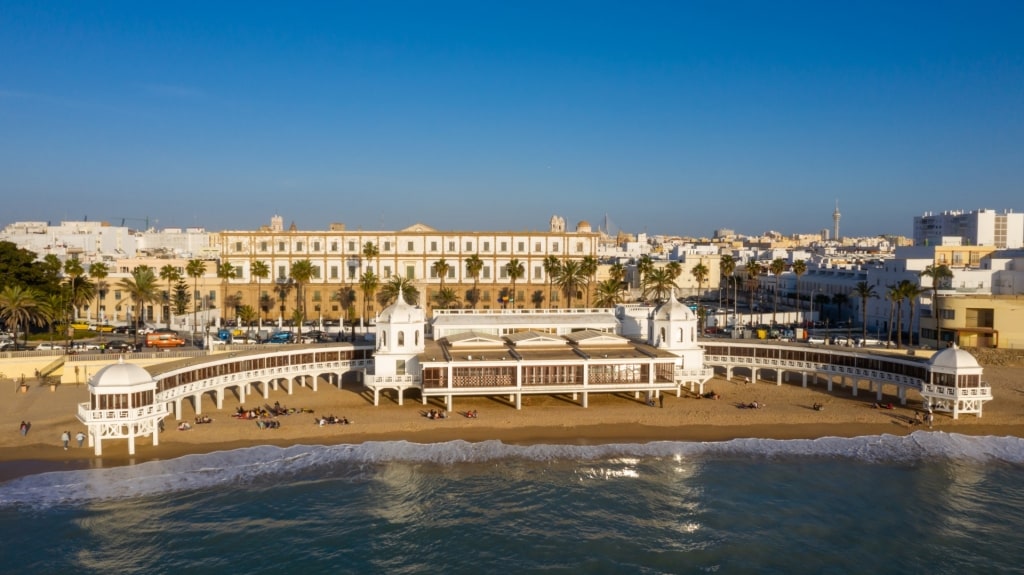
La Caleta Beach, Cadiz
Today, this calming spot is home to some of the best beaches in Southern Spain, each dotted with chiringuitos, casual shoreside restaurants that typically serve local seafood.
One of the many fantastic things about Cadiz—and why it’s so great for first-time visitors in Spain—is that travelers can easily combine time at the beach with exploring the city’s beguiling old town in one day.
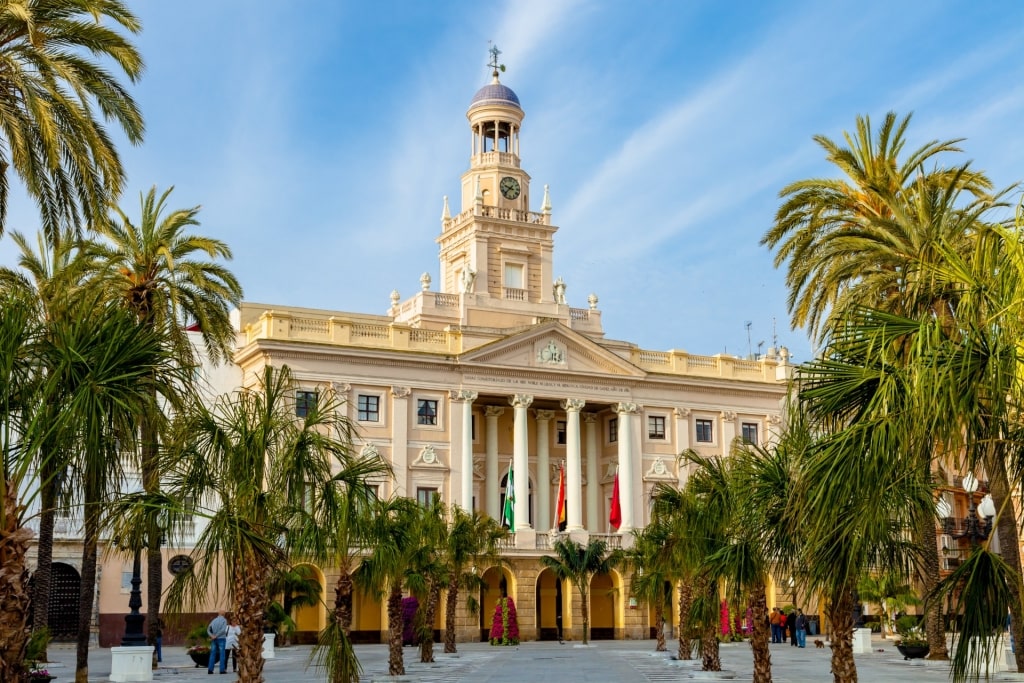
Old Town Cadiz
Cadiz’s old quarter lies at the northern tip of the spit, within the remains of the old city walls. As is typical with Spain’s old neighborhoods, Cadiz’s old town is made up of narrow cobbled streets, ancient churches, and narrow tapas bars.
Visit Cadiz’s Archaeological Site of Gadir, which traces the city’s Phoenician past through the remains of eight houses set around two cobbled streets.
The remains of a Roman fishing factory, with its basins used for salting fish from the Mediterranean, are also among the ruins. There are more Roman ruins in Cadiz, with a 2,000-year-old theater that once held 2,000 spectators partially excavated in the old town.

Tapas
Stop by Mercado Central Cádiz, the oldest covered market in Spain, to nibble on Jamon Iberico and sip sherry or hunker down in one of the area’s wonderful tapas bars, such as the Tapería de Columela.
Read: The Ultimate Guide to Tapas in Spain
Rioja Wine Region
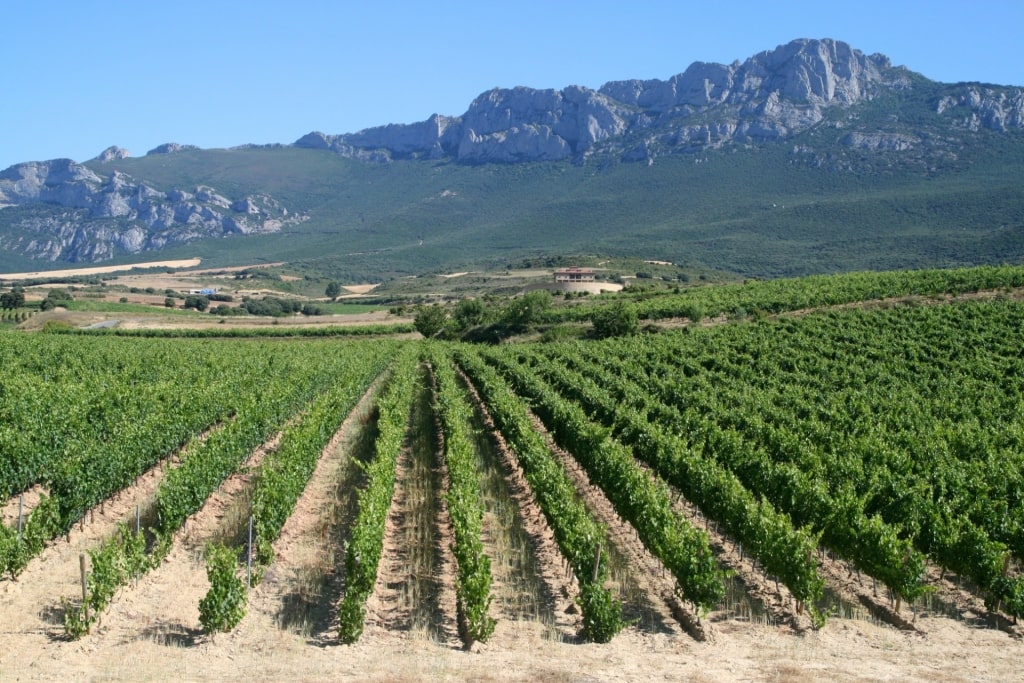
La Rioja
For oenophiles visiting Spain for the first time, a pilgrimage to the Rioja wine region, including La Rioja, Navarre, and Alava, is an essential stop 60 to 90 minutes south of Bilbao.
Rioja is filled with emerald-green vineyards to visit, with wineries offering estate tours and wine tastings. There is plenty more to this region than wine, though.
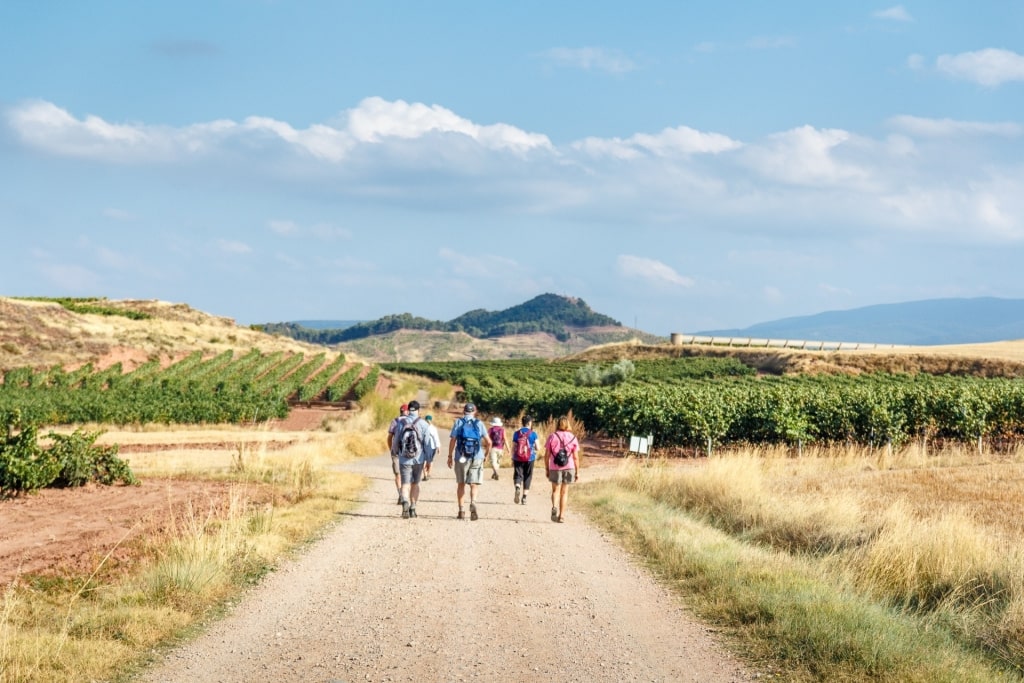
Camino de Santiago
The Camino de Santiago, also known as St. James’ Way, is an ancient pilgrimage route that cuts through the region to reach Santiago de Compostela in Galicia. As a result, the area is dotted with hillside monasteries and charming churches in towns such as Santo Domingo de la Calzada.
You could also visit La Rioja’s ancient capital, Logroño, another important stop on the route to Santiago de Compostela. Here you’ll find the biscuit-colored Co-cathedral of Santa María de la Redonda and the picturesque Ebro River, which winds through the city.

Marqués de Riscal City of Wine Photo by David Mapletoft on Flickr, licensed under CC BY 2.0
Among the best places to go wine tasting is Elciego, Alava, deep within the Basque Country. The highlight here is the Marqués de Riscal City of Wine, another sleek Frank Gehry-designed building.
This pink, gold, and silver titanium-clad landmark, opened in 2006, rises like a mirage from the surrounding vineyards. It’s centered on the Plaza del Reloj, Square of the Sun Dial, where visitors can admire the original Marqués de Riscal bodega, which dates back to 1860.

Wine
Spend time tasting a selection of delectable wines that Spain is known for, including the Marqués de Riscal Verdejo, Arienzo Crianza, and Marqués de Riscal Reserva.
La Sagrada Familia, Barcelona
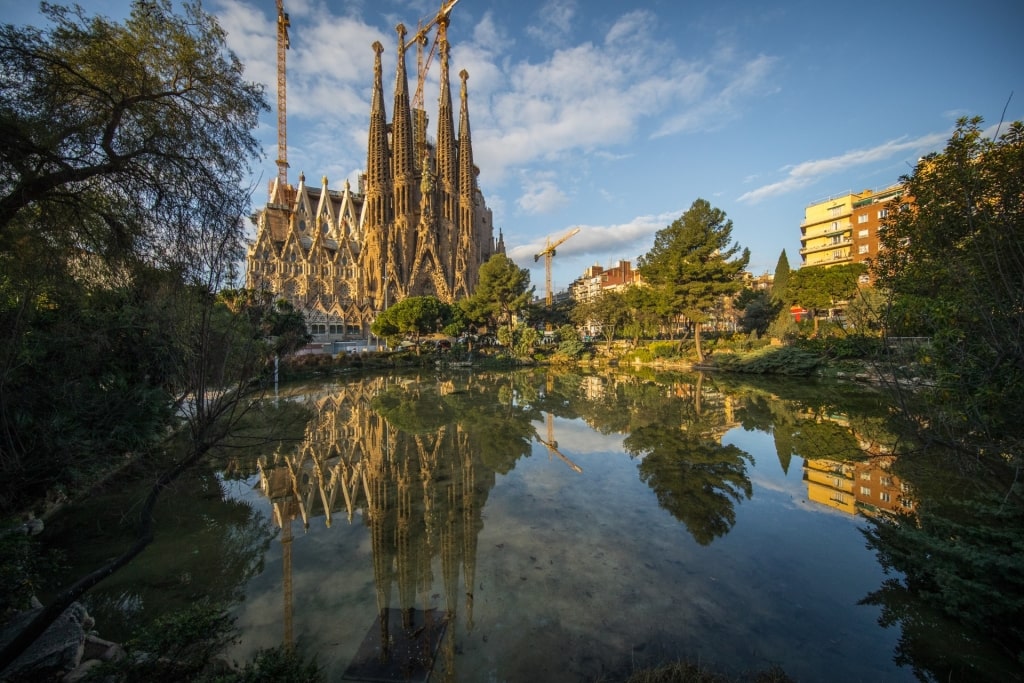
La Sagrada Familia, Barcelona
Barcelona’s famous basilica is breathtaking from every angle, particularly for first-time visitors to Spain witnessing it for the first time. Its towers also offer some of the best views in Barcelona.
The Sagrada Familia is recognized the world over for its fanciful design by architect Antoni Gaudí. Though it might have been under construction for eons, Gaudi’s vision for the Sagrada Familia is now nearing completion making it a great time to visit Barcelona.
Wander the perimeter of the Sagrada Familia to take in the exterior details of the three facades—the Nativity, the Passion, and the Glory—each representing a different period in the life of Christ.

La Sagrada Familia, Barcelona
Pre-book a ticket to tour inside this UNESCO World Heritage Site, too, where Gaudi is buried inside the crypt. Gaze up at the vaulted ceilings and pretty stained-glass windows.
Mijas, Andalucia
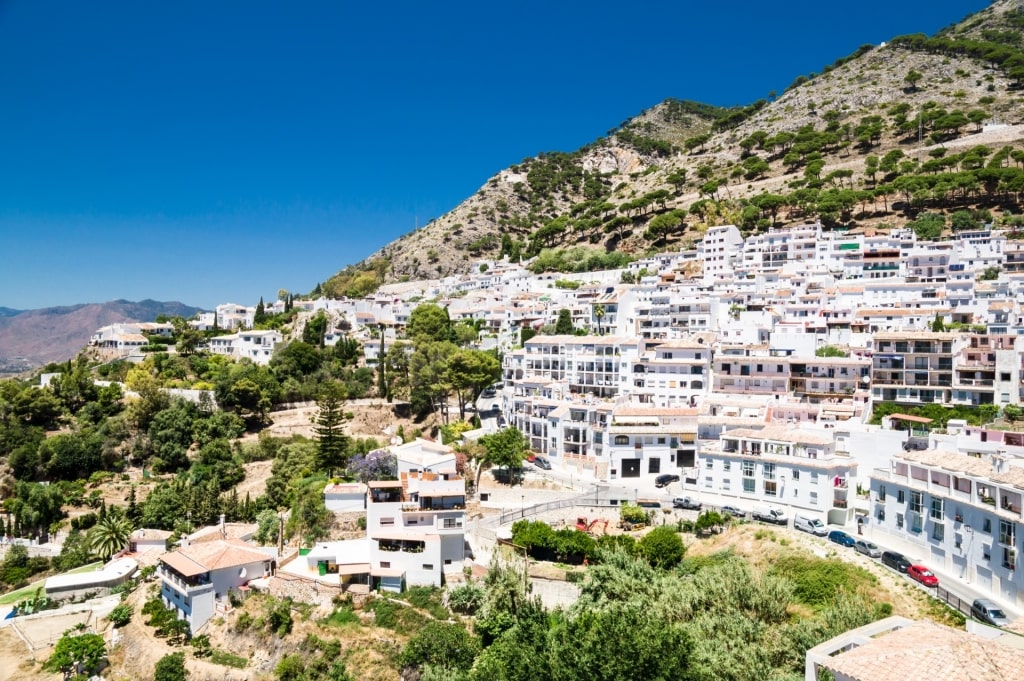
Mijas, Andalucia
If it’s your first time in Spain, factor in a trip to Mijas, one of Andalusia’s enchanting White Towns, known for its sugar-cube houses adorned with colorful plants, near Málaga.
This whitewashed village in Southern Spain clings to the Sierra de Mijas. As almost 1,500 feet above the Mediterranean, its lofty location offers fantastic views of the Costa del Sol.
The best things to do in Mijas include wandering the cobbled streets that are lined with galleries, shops, restaurants, and bars. Head to the palm tree-lined Parque La Muralla, next to the 16th-century Immaculate Conception Church, for endless panoramas.
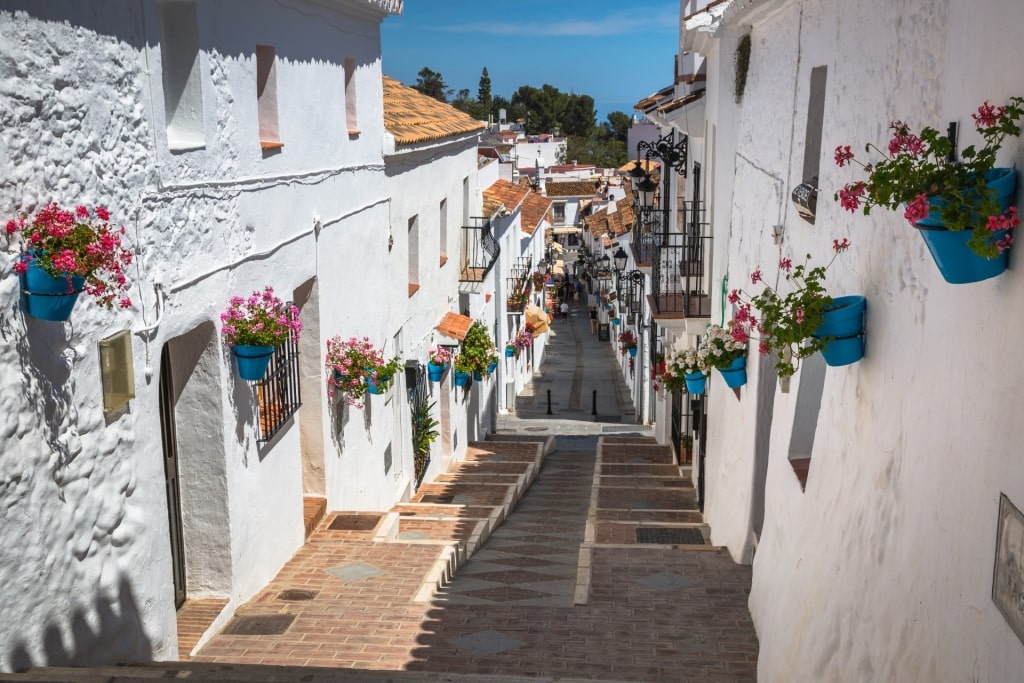
Mijas, Andalucia
Just off the main square, Pampa Tablas y Tapas is a lovely wine bar serving small plates of Jamón ibérico, chorizo, manchego cheese, croquette, and meatballs.
Maspalomas Beach, Gran Canaria
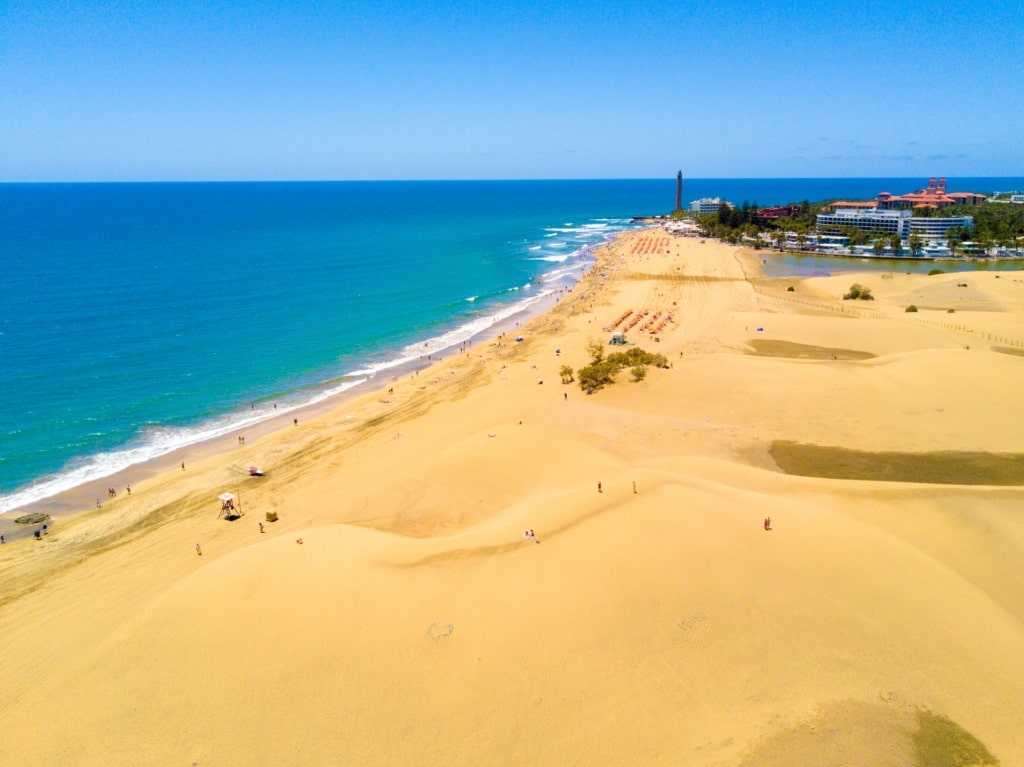
Maspalomas Beach, Gran Canaria
If you’re a first-time visitor to Spain’s Canary Islands, Maspalomas Beach on Gran Canaria’s south coast is unparalleled for its sun-drenched shoreline.
Flanked by 998 acres of the Maspalomas Dune system, Maspalomas is one of the best beaches in the Canary Islands for its spacious golden sands, the nearby verdant palm grove, and brackish lagoon.
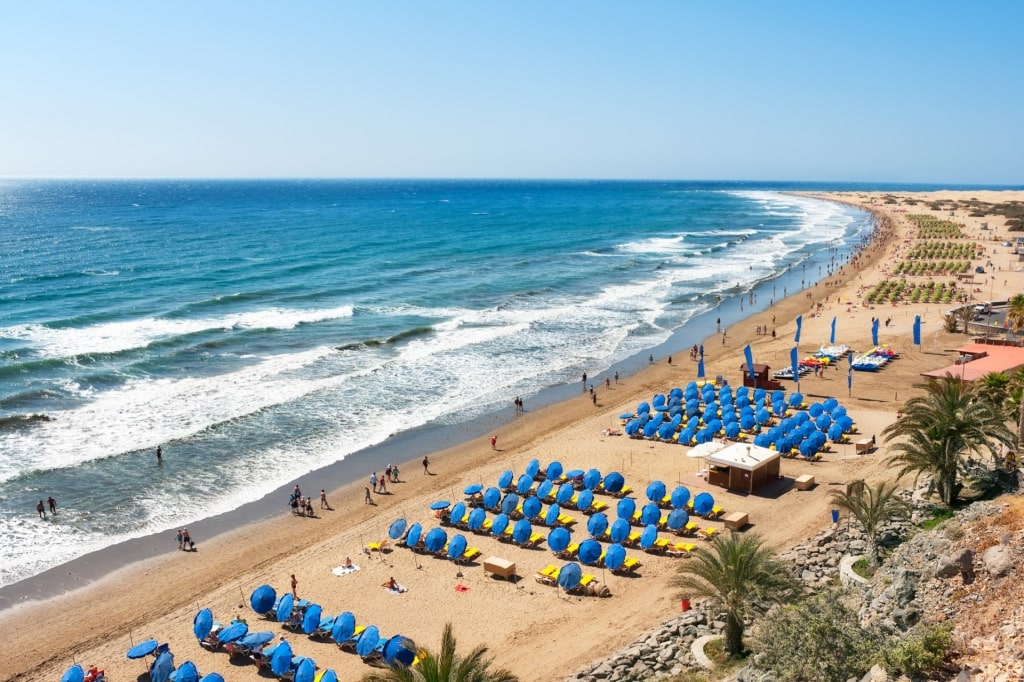
Playa del Ingles, Gran Canaria
The eastern section of this two-mile beach meets the resort of Playa del Ingles, with plenty of facilities, such as sun loungers, parasols, restaurants, and bars.
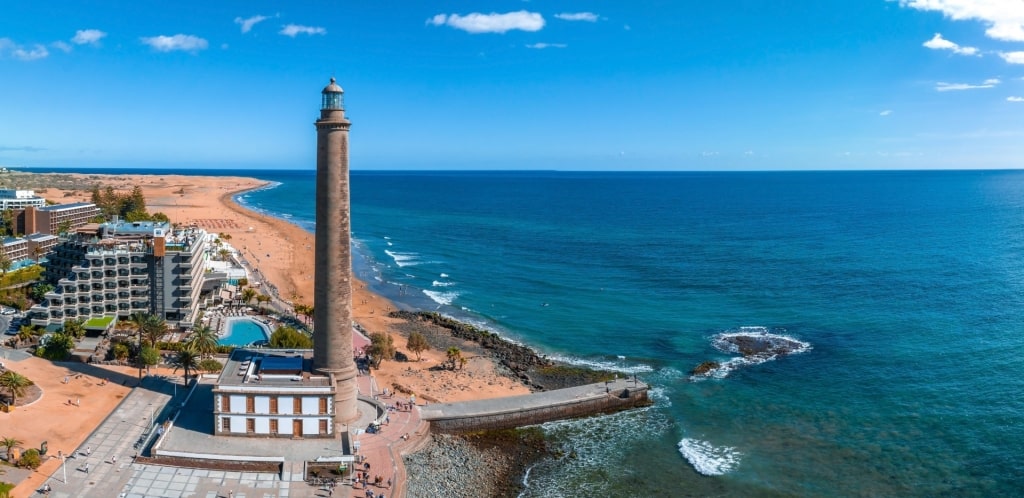
Faro de Maspalomas lighthouse, Gran Canaria
For a quieter section of beach, however, head west towards the towering Faro de Maspalomas lighthouse. Sunbath, enjoy a stroll among the sand dunes, and a cooling sea swim in the Atlantic Ocean.
Read: Best Things to Do in Gran Canaria
Valencia Central Market
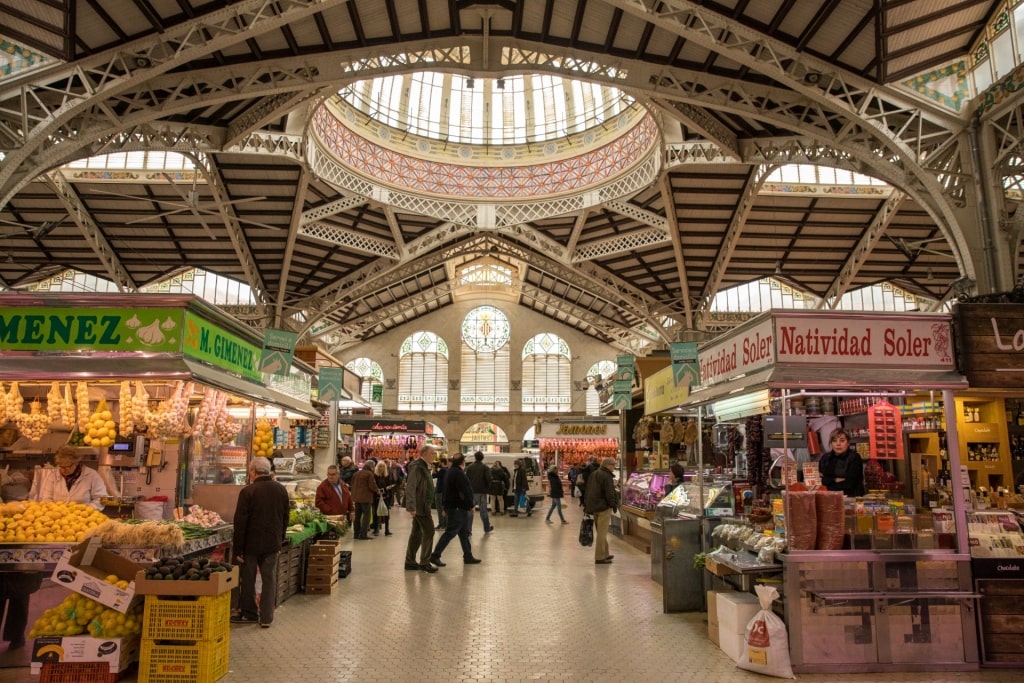
Valencia Central Market
The sprawling Central Market of Valencia—considered the largest indoor market in Europe—is a wonderful example of the city’s Art Nouveau architecture. As fabulous as the building is, though, the gourmet food is the real reason travelers flock here.
Offering a wide array of produce under one roof, Valencia Central Market is among the best places to visit in Spain for first-timers to taste some of the nation’s exquisite produce. You will find cured meats and cheeses, fresh seafood, and essentials such as paella rice, olive oil, and balsamic vinegar.
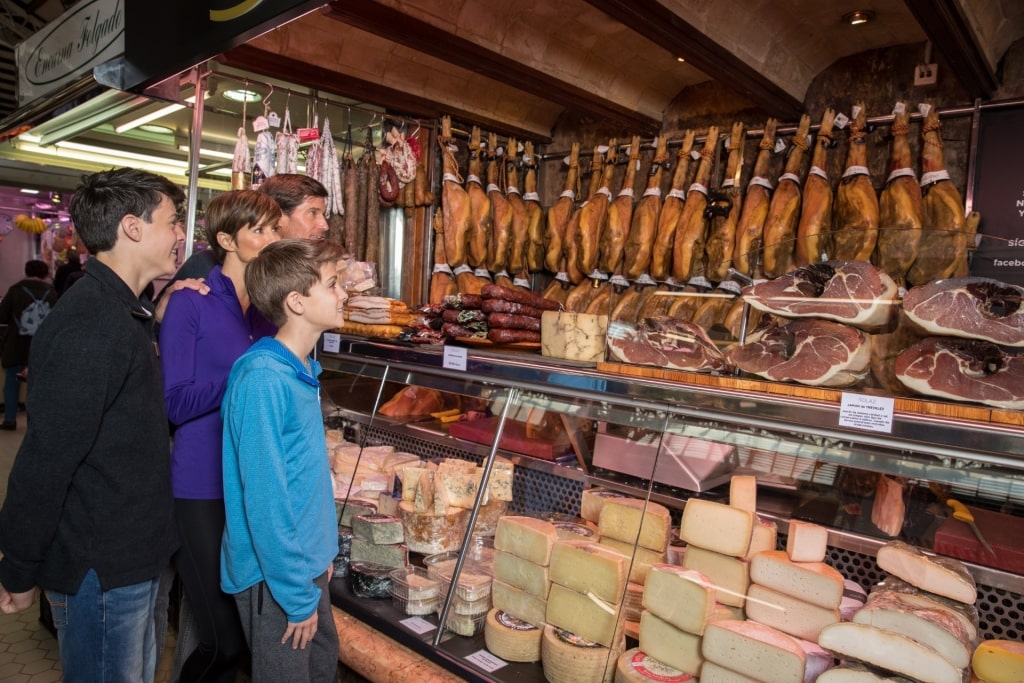
Valencia Central Market
Herbs, spices, bread, fresh fruit and vegetables, wines, and cookware are also available.
Order a plate of saffron-infused paella, with this famous Spanish dish originating in Valencia, or try another one-pot local specialty: fideua. This Valencian dish is similar to paella but replaces rice for noodles, typically prepared with squid ink, and is delicious topped with shrimp or lobster.
City of Arts and Sciences, Valencia
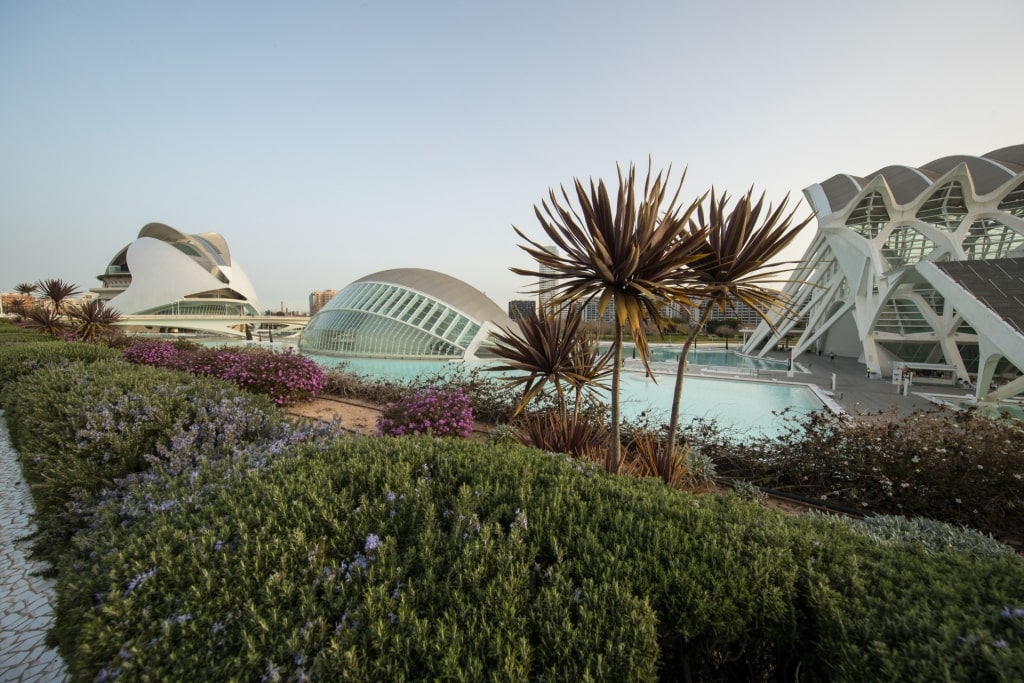
City of Arts and Sciences, Valencia
Valencia’s futuristic City of Arts and Sciences complex consists of several landmark buildings designed by local star architect Santiago Calatrava and Madrid-born Félix Candela.
Located on the River Turia’s former riverbed, the single Candela-designed building (the rest are by Calatrava) is Oceanogràfic, one of Europe’s largest aquariums with 45,000 sea creatures belonging to 500 different species.

City of Arts and Sciences, Valencia
The futuristic Hemisfèric is a 3D movie theater showing educational documentaries on a screen that spans close to 3,000 feet, while next door, the Science Museum encourages visitors to explore through interactive touch-friendly exhibitions.
The Palau de les Arts is the place to go for live opera, ballet, and other musical performances, while The Umbracle is a ravishing covered-garden with sculptures and lush palm trees.
Cies Islands, Vigo
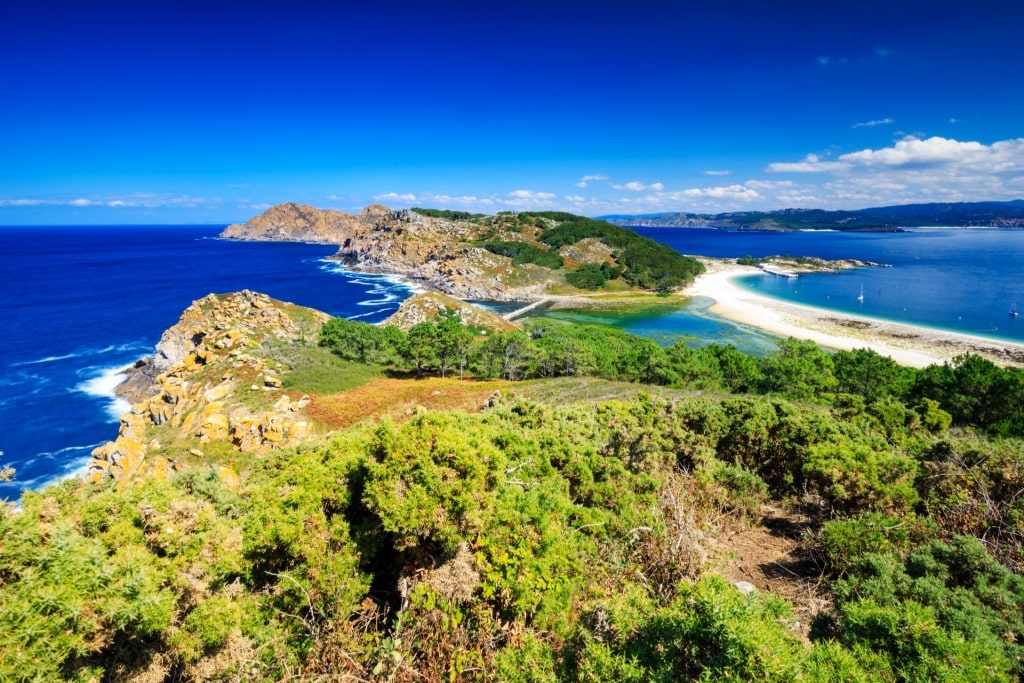
Cies Islands, Vigo
Delve into Spain’s nature and visit the beautiful Cies Islands. This archipelago of three car-free islands has an undisturbed and remote feel, lying off the northwest coast of Spain.
Boats and ferries dock on Monteagudo, which is connected to do Faro by the crescent-shaped Playa de Rodas. This dazzling white shore features topaz-blue clear water and is flanked by a thick forest. It’s an idyllic spot to sink your feet into the sand and enjoy a refreshing sea swim.
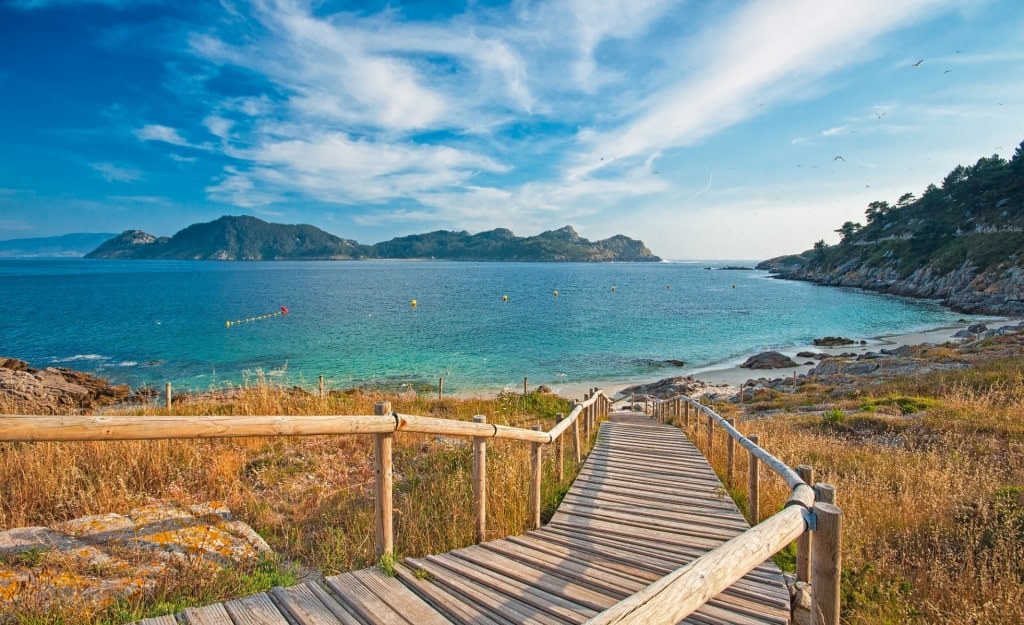
Playa de Rodas in Cies Islands, Vigo
There are four dedicated hiking trails that crisscross Monteagudo and do Faro, taking in Lake Cíes, coastal forests, lighthouses, beaches, and lookout points.
After time well spent on the beach and conquering an island hike, return to one of the Cies Islands’ three restaurants for a leisurely lunch. Try the beachside Serafín Restaurant for its selection of fresh fish from the Vigo estuary.
La Seu, Palma De Mallorca
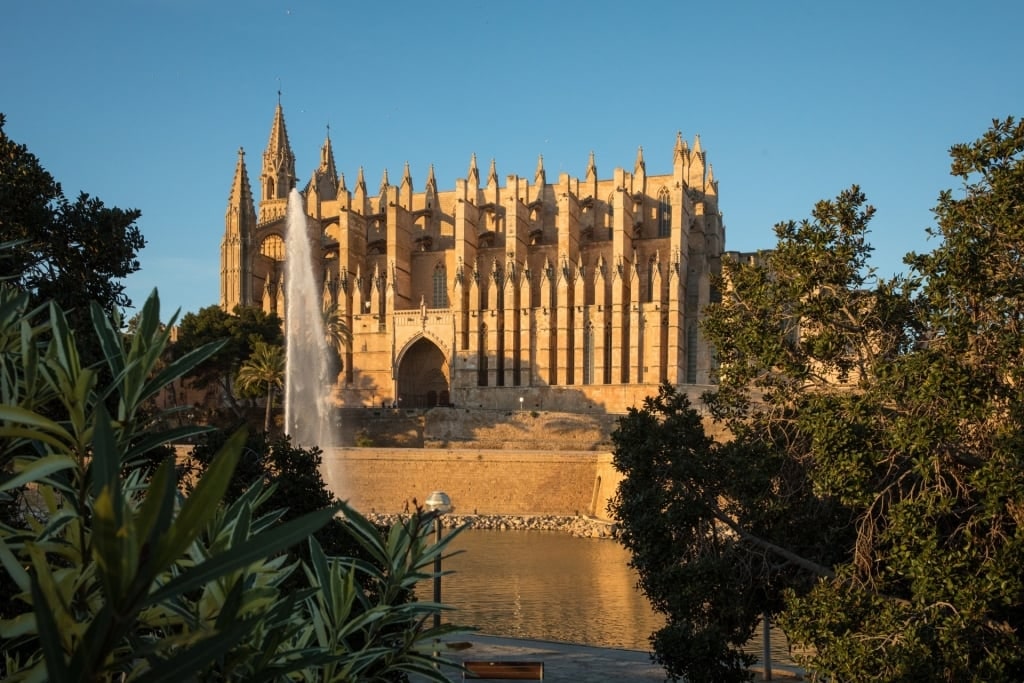
La Seu, Palma De Mallorca
The sensational La Seu, or the Cathedral of Santa Maria of Palma, is Palma’s 144-foot-tall Gothic church on the Spanish island of Mallorca, dominating one end of the sweep of the Bay of Palma.
The glowing, three-nave cathedral, built over the old city walls of Palma de Mallorca, took centuries to complete. Its construction began in the early 13th century.
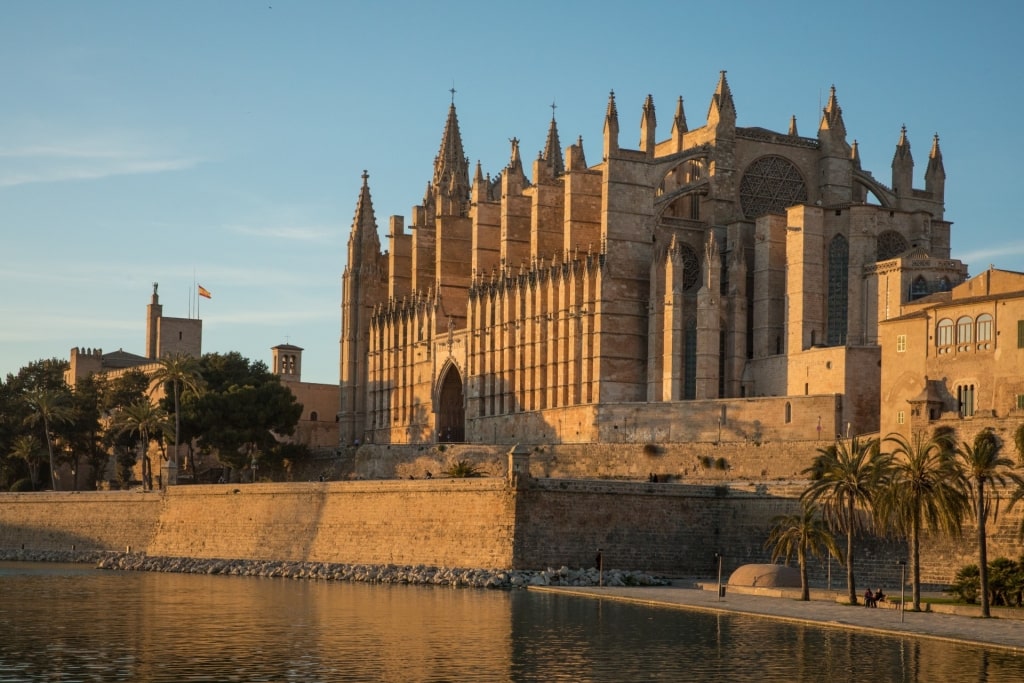
La Seu, Palma De Mallorca
A tower with nine bells, spectacular north and south doors featuring sculptures by Guillermo Sagrera, and stained glass windows, including a magnificent rose window, add to the elegance of this imposing cathedral.
Timanfaya National Park, Lanzarote
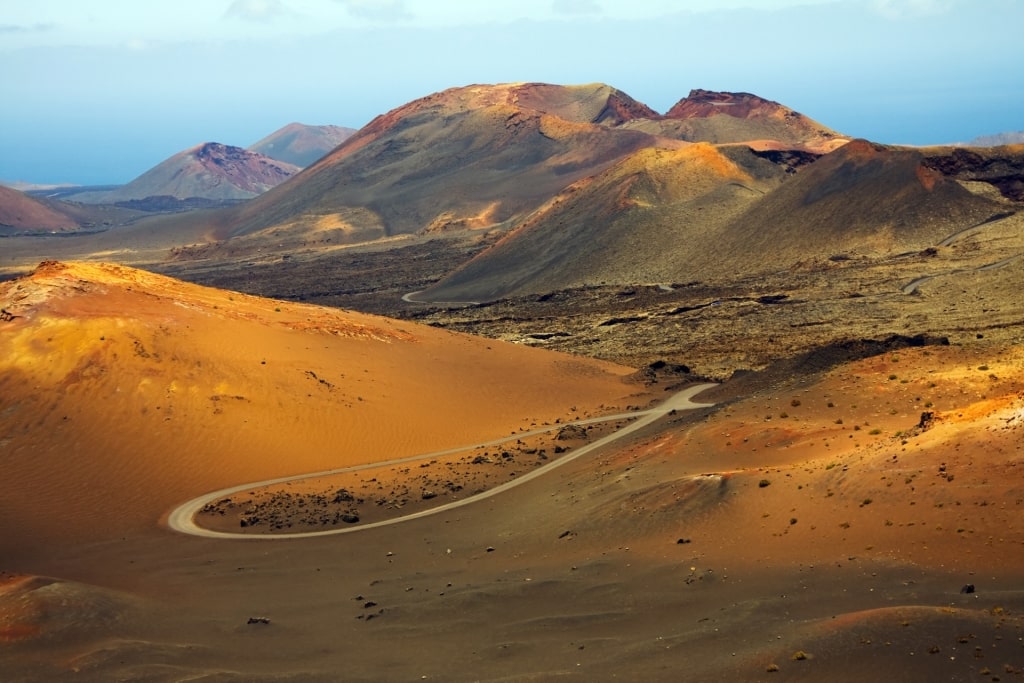
Timanfaya National Park, Lanzarote
This rugged national park in southwest Lanzarote, the Canary Islands, is the result of a series of volcanic eruptions that took place in 1720, 1736, and 1824. The lava and magma that flowed created a landscape of rock formations, craters, and lava fields with an otherworldly feel.
There’s almost no vegetation in Timanfaya and the ground is a tawny-syrup shade, adding to the park’s haunting beauty. As a traveler, it’s one of the best places to visit in Spain for first-timers.

Timanfaya National Park, Lanzarote
To explore the park at a relaxed pace, opt for a guided bus drive through the Montañas del Fuego, or Fire Mountains, or choose a hike, either self-guided or with a local expert.
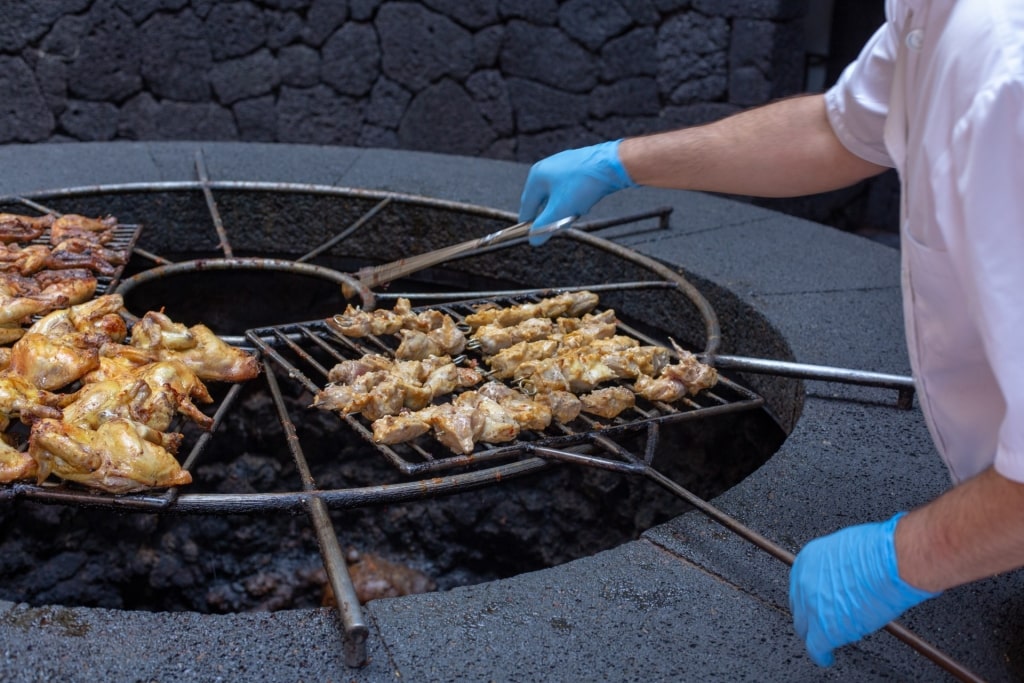
El Diablo, Lanzarote
Look for bubbling geysers as you explore the extraordinary landscape of Montañas del Fuego. Take a break at El Diablo, Timanfaya’s restaurant, where chefs cook using heat directly from the earth.
For a first-time visit to Spain’s Canary Islands, the local dish of boiled potatoes with mojo sauces (spicy, green and red bell pepper-based sauces), is a must-try.
Alhambra Palace, Málaga

Alhambra Palace, Málaga
Framed by the mighty peaks of the Sierra Nevada, Granada’s exquisite Alhambra Palace is a Moorish fortress surrounded by cypresses and other Mediterranean vegetation. It’s regarded as one of the most beautiful places in Spain.
This enchanting UNESCO World Heritage Site, built in the 13th and 14th centuries, was the home of the Nasrid Sultans, the last rulers of the Spanish Muslim Kingdom. The red-tinged palace is one of the best places to visit in Spain for first-timers wanting to delve into the country’s Arabic past.

Charles V Palace, Málaga
A guided tour is the best way to explore Alhambra’s complex of buildings, courtyards, and gardens, including Charles V Palace, the Nasrid Palaces, the Alcazaba citadel, and the Generalife Gardens.

Patio of the Lions, Málaga
Wander among the Nasrid palaces’ richly decorated rooms and courtyards, including the Palace of the Lions and the Patio of the Lions, where 12 lion statues spurt jets of water. Explore tree-lined avenues, serene cloisters, and courtyards with soothing pools and marble fountains.
Read: Spain Travel Tips
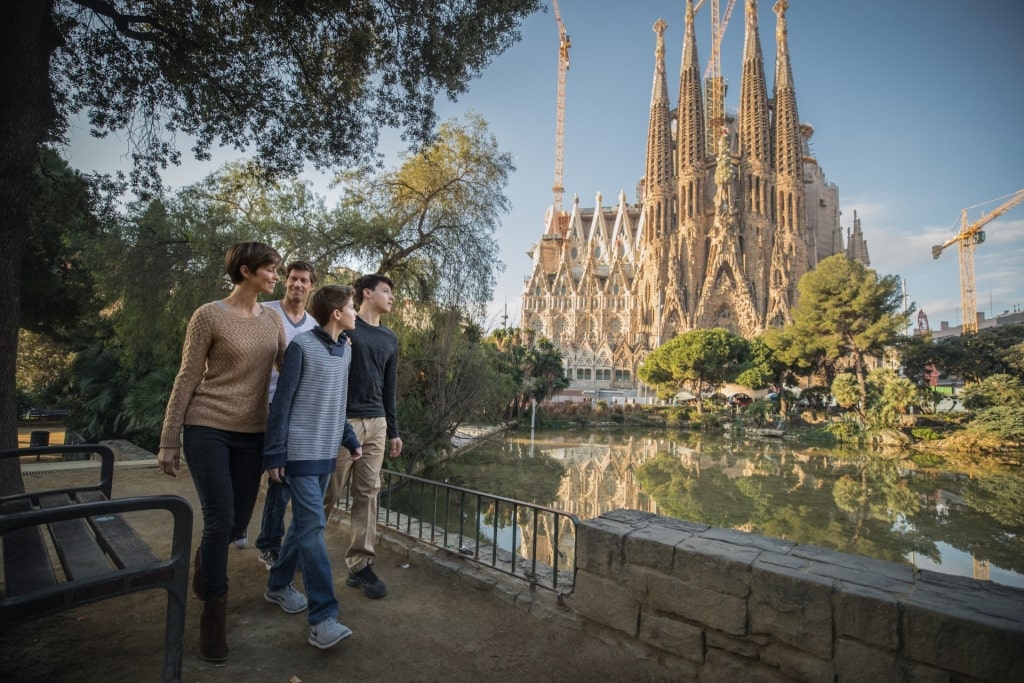
Barcelona, Spain
From blissful beaches to flamboyant architecture, you can explore the best places to visit in Spain for first-timers on a cruise vacation. Browse Celebrity’s cruises to Spain and book your next getaway.
